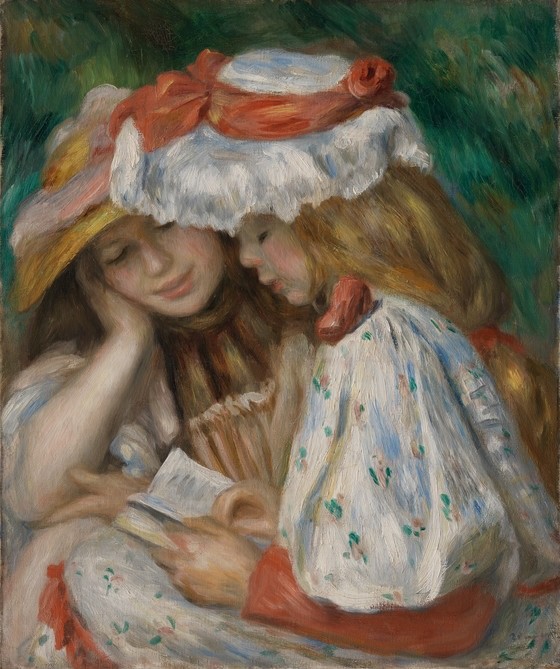Parent question: My son is 11 years old, and he suffers from dyslexia. I’ve been told you oppose accommodations for dyslexic children. That is irresponsible. I don’t think you understand how these children suffer.
RELATED: Eight Ways to Help Kids Read Complex Text
Shanahan responds:
I do oppose some – though not all — accommodations for students with dyslexia.
The purpose of accommodations is to enable people with disabilities to access and participate in activities, jobs, and learning. An accommodation is an alteration to an environment that increases individual access.
Examples of accommodations that I fully support are modifications to curbs to allow those who depend upon wheelchairs to get where they want to go. Or the provision of large print texts to those with vision problems that can be overcome or minimized by such text. Basically, if access or learning can be enhanced through some alteration of the environment I’m all for it.
But as your letter suggests, there are “accommodations” that I do consider problematic. I often hear from teachers (and sometimes parents) who hope I will endorse replacing reading with listening for kids who struggle with decoding.
I get their thinking: Why should we hurt kids’ feelings by asking them to try to read a science or social studies text when we know they find reading itself to be hard?
Obviously, our purpose is not to make these kids feel bad. But it is – or at least should be – to teach students to read. Accommodations that prevent or limit learning are a bad idea.
There is no question that providing audio versions of text will make those texts more accessible to many students with reading disabilities.
What such an accommodation cannot do is help these students read any better. Comprehending while reading is a different game than comprehending while listening. They both have value, but they are not the same thing. One should not be allowed to take the place of the other.
Accommodations are protections. They protect kids from being excluded or penalized due to disabilities. As such, accommodations have a role to play in schools and in society generally.
But reducing reading instruction is not an accommodation. Just the opposite. It is an act of exclusion. Replacing reading with listening may seem protective, but it is protecting kids against learning.
These days I hear from teachers who love the idea of replacing reading instruction or reading assignments with products like Audible. They usually aren’t focused on kids with disabilities, just garden variety struggling and reluctant readers.
These teachers often seem to assume that reading and listening are interchangeable, that gains in one generalize to the other.
These beliefs are not supported by research, however.
First, there are a slew of studies that find big differences between reading and listening. These studies suggest that these abilities have only about 40% shared variance (e.g., Silinkas, et al., 2024; Wolf, et al, 2019). That’s not nothing, but it suggests the unlikelihood that the teaching of one will automatically transfer to the other.
(I’m not satisfied with this 40% figure. To my way of thinking, the major outcome of such studies has been an increased appreciation of the complexity inherent in trying to measure oral and written comprehension in analogous ways. It has turned out to be a very complicated problem).
Even if we accept that figure, it is important to remember that is a correlational estimate (a squared correlation in fact). The way to think about that 40% is: “IF there is a causal relationship between these variables, then 40% is an estimate of how much effect one of these may have on the other.” In other words, knowing that two variables are related does not prove that teaching one will have an impact on the other.
For that, we turn to experimental studies – studies in which listening comprehension is taught, with the impact being measured through reading comprehension. It turns out that there are few such studies and even fewer that report any cross over benefits (e.g., van den Bos, et al., 1998; van Zeijts, et al., 2023).
Teaching listening comprehension should have a place in our schools. Replacing reading instruction and practice with listening comprehension is a bad idea, however.
I appreciate that many folks who seek reading accommodations for their kids are thinking more about testing situations than instructional ones.
Is it okay to replace reading with listening when we are evaluating reading comprehension, such as on state tests?
Given the important differences between reading and listening noted above, that elementary students usually have better listening than reading comprehension (that eventually shifts for most of us), and that those tests are meant to identify how well our kids can read with comprehension, I would argue against that testing modification.
However, replacing reading with listening is not the only possible accommodation in such testing situations.
Research has found that allowing – or encouraging – these students to read test texts aloud rather than silently improves their performance significantly (Giuisto & Ehri, 2019).
One thing that I like about that approach is that it is an accommodation that is under the control of the student rather than the adults. That means that it does more than take away an impediment to performance. It empowers students to minimize or solve the problem.
Another thing I like about it that it is something that any reader could do in any real reading situation – reading a textbook in a dorm room or doing a work task in one’s cubicle.
Let’s not replace reading comprehension instruction with listening comprehension, and let’s use reading centered accommodations when we are testing reading comprehension.
READ MORE: Shanahan on Literacy Blogs
References
Giusto, M., & Ehri, L. C. (2019). Effectiveness of a partial read-aloud test accommodation to assess reading comprehension in students with a reading disability. Journal of Learning Disabilities, 52(3), 259-270. https://doi.org/10.1177/0022219418789377
Silinskas, G., Gedutiene, R., Torppa, M., & Raiziene, S. (2024). Simple view of reading across the transition from kindergarten to grade 1 in a transparent orthography. Scientific Studies of Reading, 28(1), 60-78. https://doi.org/10.1080/10888438.2023.2220848
Wolf, M. C., Muijselaar, M. M. L., Boonstra, A. M., & de Bree, E. H. (2019). The relationship between reading and listening comprehension: Shared and modality-specific components. Reading and Writing: An Interdisciplinary Journal, 32(7), 1747-1767. https://doi.org/10.1007/s11145-018-9924-8
van den Bos, Kees P., Brand-Gruwel, S., & Aarnoutse, C. A. J. (1998). Text comprehension strategy instruction with poor readers. Reading and Writing: An Interdisciplinary Journal, 10(6), 471-498. https://doi.org/10.1023/A:1007976225000
van Zeijts, Brechtje E. J., Ganushchak, L. Y., de Koning, B. B., & Tabbers, H. K. (2023). Stimulating inference-making in second grade children when reading and listening to narrative texts. Reading and Writing: An Interdisciplinary Journal. https://doi.org/10.1007/s11145-023-10463-x
LISTEN TO MORE: Shanahan On Literacy Podcast

.jpg)





Comments
See what others have to say about this topic.